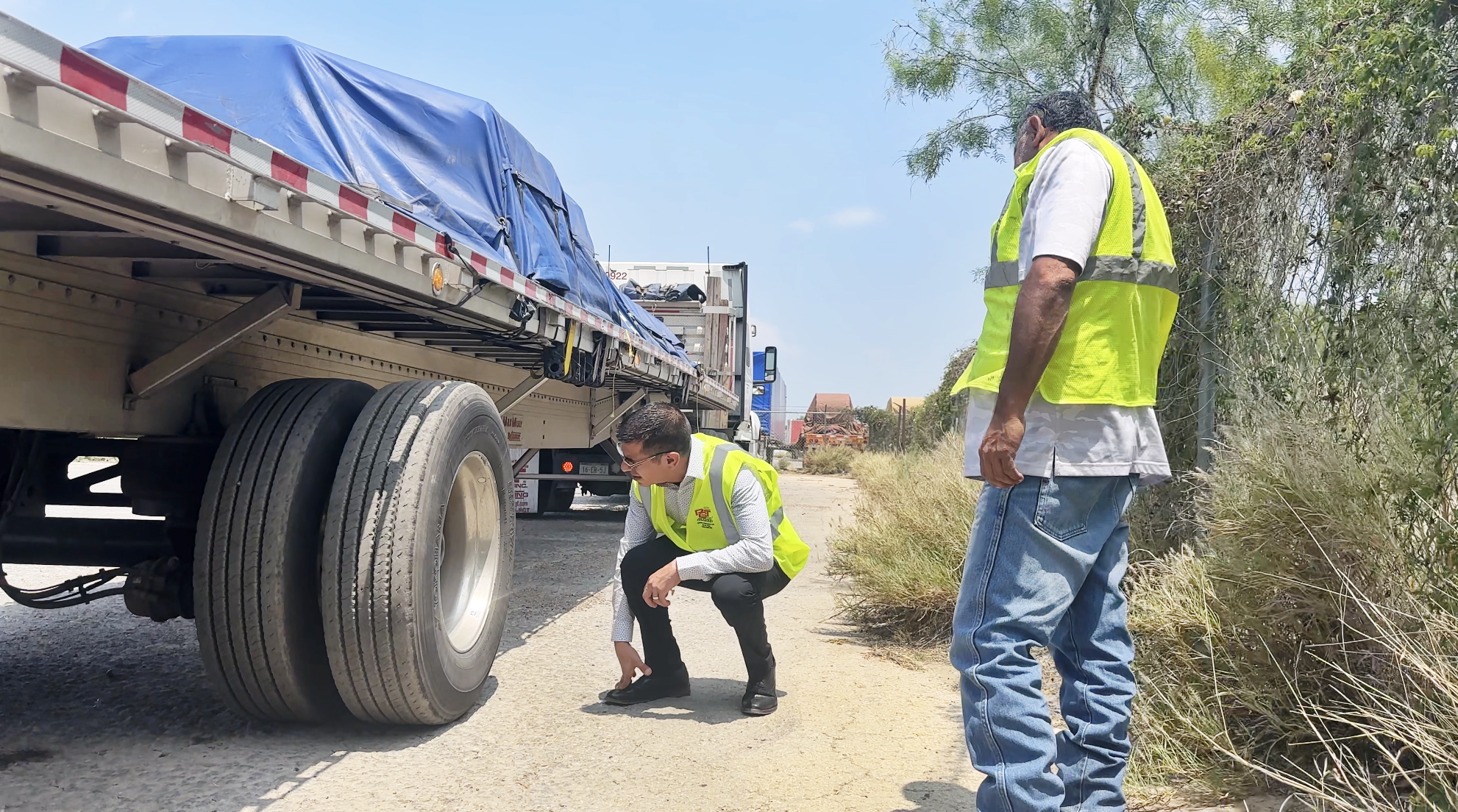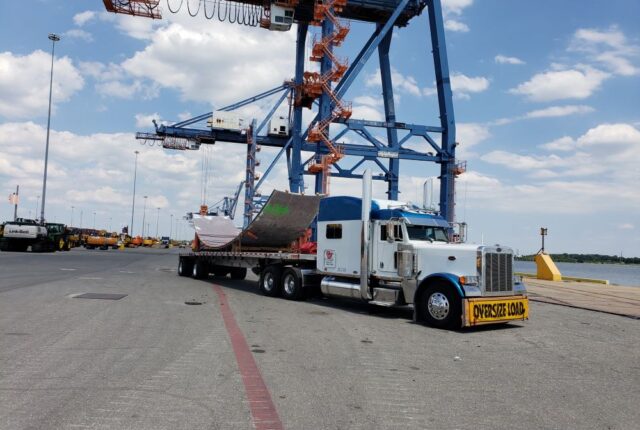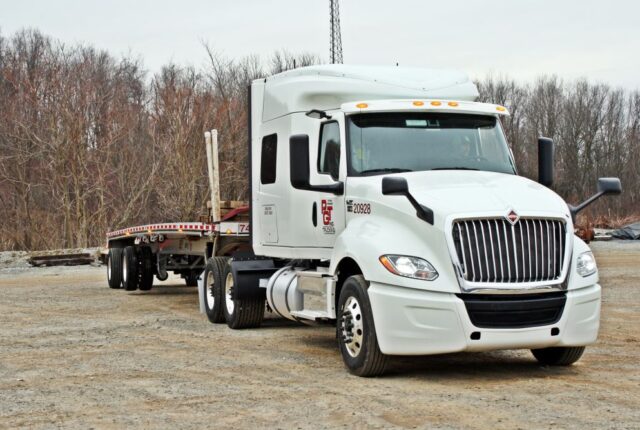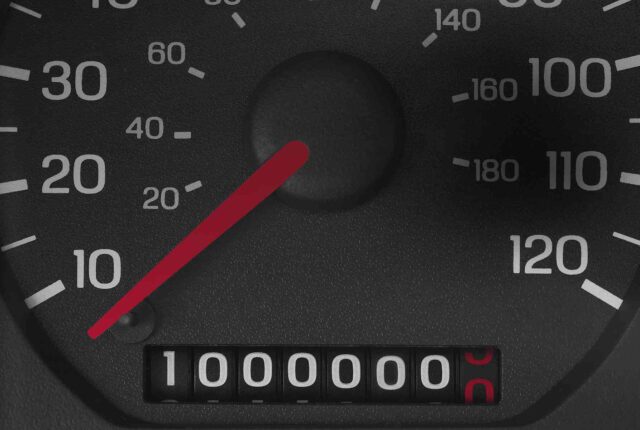
PGT Trucking’s Guide to Pre- and Post-Trip Inspections
A proper pre- and post-trip inspection is what separates the average truck driver from a true professional! Federal law requires that a driver of a commercial motor vehicle completes an inspection every day on each vehicle operated (truck and/or trailer). More importantly, a thorough truck and trailer inspection helps truck drivers keep their equipment in safe working order, protecting everyone out on the road. Don’t skip your pre-trip! Follow PGT Trucking’s guide to pre- and post-trip inspections.
What is a pre-trip inspection?
A pre-trip inspection is a thorough check of the vehicle to ensure everything is in working order before you take off down the road. Flatbed truck drivers should check their tires, brakes, lights, engine fluid levels, securement (if loaded) and more. By completing a general observation of all equipment before leaving, flatbed truck drivers know their truck and trailer are safely ready for the day ahead.
When should I do a vehicle inspection?
Flatbed truck drivers at PGT are required to complete an inspection on their truck and trailer at the start of their day, at the end of their day, and any time they drop or hook to a different trailer. Walk around inspections and load checks should also be completed at every change of duty status (fueling, 30-minute break, loading, unloading, etc.).
Why should I do post-trip inspection?
A post-trip inspection will help a flatbed truck driver identify any defects that may have occurred since the pre-trip inspection. Any repairs that are needed can be addressed immediately instead of delaying the start of a driver’s next trip. For flatbed truck drivers who drop and hook, a post-trip inspection is common courtesy – don’t leave issues for the next driver to find. It’s not safe!
How long should a pre/post-trip inspection take?
A thorough pre/post-trip inspection should take about 15 minutes to complete. It doesn’t take long, but it will save a flatbed truck driver valuable time in the long run. Don’t be stuck on the side of the road with a blown-out tire. Get any problems quickly addressed during the pre/post-trip inspection.
What is the goal of a pre/post-trip inspection?
The purpose of a pre/post-trip inspection is safety! When equipment fails over the road, it places the truck driver and other motorists at risk. By examining the vehicle at the start and end of a trip, flatbed truck drivers can catch any defects before they cause a bigger problem over the road.
If I find something wrong during my pre/post-trip inspection, what should I do?
Any defects in the truck or trailer must be noted on the Driver Vehicle Inspection Report (DVIR), and flatbed truck drivers should call the PGT maintenance hotline and their Fleet Manager. Any item considered out-of-service by the Department of Transportation (DOT) must be repaired immediately before the vehicle can move. Any defect that is not considered an out-of-service DOT violation must be repaired before that truck or trailer can be dispatched on another load. Drivers should not operate the vehicle if they feel it is in an unsafe condition or has any out-of-service defects!
What are the most common defects found during a pre/post-trip inspection?
At PGT, the most noted defects during a pre/post-trip inspection are related to the tires, brakes or lights. While all equipment should be reviewed for possible safety concerns, flatbed truck drivers should pay extra attention to these problem areas.
Do I need to wear any personal protective equipment (PPE) while doing a pre/post-trip inspection?
Yes! You should have your safety vest, gloves, appropriate footwear, goggles, and hard hat on while performing safety functions. Other tools for the inspection include a flashlight, tire depth gauge and tire pressure gauge.
Should I do a pre-trip inspection on my personal vehicle?
Yes! While it’s not legally required to do a pre-trip inspection, all non-commercial vehicles should still be routinely checked to confirm they are in good operating condition. It’s a great habit to get into, and for flatbed truck drivers, practice makes perfect. Do a pre-trip on every vehicle, every time!
How to Complete a Truck and Trailer Inspection
Step 1: Front of the Tractor
- Complete a visual inspection. Are all numbers and stickers present and clearly visible? Is there any damage or visible leaks?
- Open the hood and check all fluid levels and belt tension.
Step 2: Cab
- Enter the cab and start the engine. Test the horns, inspect the windshield (is it dirty? – clean it!), check the seatbelt and fire extinguisher.
- Is your ELD tablet securely mounted on the dash? Do you have all required documentation in the cab and readily accessible?
Step 3: Air and Lights
- Turn the engine off. Press and hold the brakes, listening for any air leaks or drop in pressure.
- Start the light check and observe all lights during your truck and trailer walk around.
Step 4: Left Front and Right Front Tractor
- Check the tires, brakes, and hub oil levels and look for exhaust leaks.
- When checking tires, check the air pressure, tread depth, sidewall, rims and lug nuts.
- When checking brakes, look for any extreme wear, cracks, soaked/contaminated oil, broken springs or anything out of adjustment.
Step 5: Front of Trailer and Mid Tractor
- Check the fuel cap.
- Look at the catwalk, headache rack, and bulkhead. Is everything clear of debris? Is all equipment properly secured? Remember, bungee cords have no working load limit and should never be used to secure tarps, chains, binders, lumber or pipe stakes.
Step 6: Right Forward and Rear Drive Wheel Ends
- Check both the inside and outside tires. Inspect the brakes, shocks and air lines.
Step 7: Rear of Tractor
- Check the rear light panel.
- Inspect the mud flaps.
- Confirm the fifth wheel jaws are fully closed.
Step 8: Trailer Right Mid Inspection
- Check the dolly legs, winches and straps.
- Check the lights down the trailer.
- Check your load securement!
Step 9: Trailer Right Forward and Rear Wheel Ends
- Check hub oil and grease levels.
- Look at the inside and outside rims and tires.
- Check the brakes, shocks and air lines.
- Drain trailer air tanks.
Step 10: Rear of Trailer
- Check the lights and mud flaps.
- Confirm the DOT tape is visible.
- Look for any damages to the ICC bumper.
Step 11: Trailer Left Forward and Rear Wheel Ends
- Check hub oil and grease levels.
- Look at the inside and outside rims and tires.
- Check the brakes, shocks and air lines.
- Drain trailer air tanks.
Step 12: Trailer Left Mid Inspection
- Check the dolly legs, winches and straps.
- Check the lights down the trailer.
- Check your load securement!
- Confirm the inspection, registration and insurance.
Step 13: Tractor Left Forward and Rear Driver Wheel
- Check both the inside and outside tires. Inspect the brakes, shocks and air lines.
- Check the rear light panel.
- Inspect the mud flaps.
- Confirm the fifth wheel jaws are fully closed.
Step 14: Tractor Left Mid and Trailer Front
- Check the driver stairs.
- Inspect the bulkhead and headache rack.
- Drain the tractor air tanks.
Note: This list is meant to be a guideline only and is not fully comprehensive. Contact your Safety Manager, Fleet Manager or Training Department if you have any questions or need clarification.
Safety is Everyone’s Job – All the Time
PGT Trucking is committed to being a safe and reliable carrier, driven by the best flatbed truck drivers in the industry. We want our Proud Professionals to get home safely after every trip, and that starts with thorough trip inspections. PGT understands that details matter, and we provide multiple resources to equip our flatbed truck drivers with the tools they need to do the job well.
Want to join the company that values your safety above all else? Apply to PGT today!
We have Company Flatbed Truck Driver positions available, averaging $84,000 in gross pay a year. Other benefits include medical, dental, and vision insurance, 401(k) retirement plan, company-paid life insurance, vacation time, and paid holidays. Find out what makes PGT Trucking a 2023 Best Fleets to Drive For® Top 20 Company.
Do you want to haul freight at competitive rates while maintaining your independence? PGT is partnering with experienced Owner-Operators and has one of the best Lease Purchase Programs in the industry. Apply now!
Author
csvetahorRelated posts
When to transition to an owner-operator
Considering a career as an owner-operator/independent contractor? With the ever
Flatbed Trucking Jobs – A Guide for Truckers
With the national truck driver shortage, the demand for truck drivers is at an a
Million Mile Driver Spotlight #8
PGT Trucking introduces our new Million Mile Drivers this year, celebrating thei




